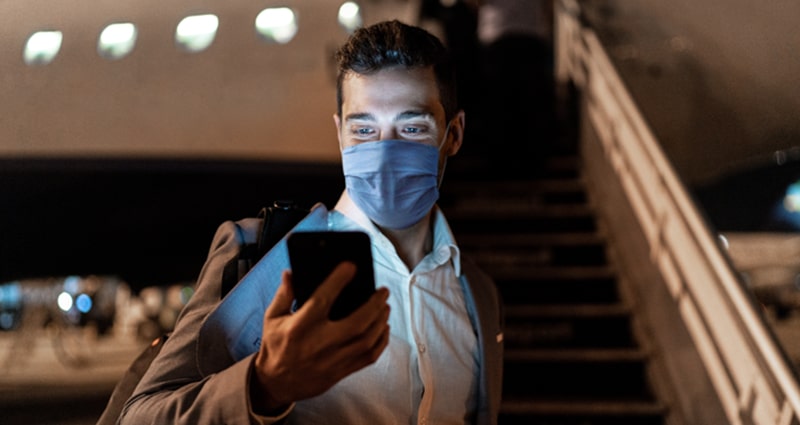Your Pandemic Operating Plan: Process vs. People

By now, most organizations seem to be well on their way to developing their pandemic operating plan, how they will continue to do business in a pandemic environment. In business aviation, the plan must detail how you will move people from location to location, stay compliant, and meet your responsibility and defensibility goals.
These plans may be very well-crafted, very specific, and very purposeful, and may, in fact, provide a clear road map to operational success. But what is missing in many of them is the consideration of what it will feel like as an individual or flight crew to actually execute the plan.
Where might the steps be challenging or confusing? Do the procedures align with what is explainable to an individual? And can the processes be performed as defined?
Flexibility Is Key
If we are going to interact with people effectively, we have to be very flexible, empathetic, and accommodating. Every person’s pandemic experience is different, so it is crucial to start from a place of understanding.
We’ve got to be able to view any situation from multiple angles and perspectives. And while we won’t be able to know for sure, we at least have to consider where a person we are interacting with is in the “grief cycle” that every person affected by the pandemic is going through to some degree. Grief is a human experience relative to the loss of something important in our lives, not just the death of someone close to us. The loss here is the way we lived our life up until Covid 19 came along.
A Real-Life Virus Exposure Scenario
In crafting a pandemic operating plan, it is helpful to learn about actual events that you might have to address. For example, the following is a scenario that occurred on a cross-country flight.
The mid-size cabin aircraft was carrying five passengers, one of whom is an executive at a large corporation, we will call him Greg. Greg was enjoying the flight like everyone else when his executive assistant received an email from Greg’s wife saying that she (the wife) had tested positive for COVID-19 and had, of course, been in close contact with him recently. The wife wanted the executive assistant to get word to Greg that he could potentially be exposing others to the virus.
You likely have in your pandemic operations plan a procedure for such a scenario. Plans are often general in nature, and if you imagine yourself in this scenario in the present tense, right now, very specific questions are coming to mind. One is how long it will be before the aircraft arrives at its destination. This is important because it might compress your decision window and create urgency to act based on the remaining flight time. Or, if it is early in the flight, it may be an option to bring the plane back home. Perhaps a diversion is better for all concerned than continuing to your destination.
As you assess your next move from an operational perspective, you also need to look at the human side of the equation. You have a passenger unaware that he may have a serious illness and could expose others to that illness. But, of course, there are also medical privacy issues to contend with.
What do you do? Do you notify him immediately? If so, how? Do you email him? Pull him aside for a confidential conversation? Who will have that conversation with him? Or, do you wait until the flight lands and tell Greg about the situation then?
Another option might be to hand out N95 masks to everyone onboard and ask that they put them on immediately. But people will likely ask why. Of course, every minute you delay taking action increases everyone’s exposure to someone who may be spreading the coronavirus.
There’s no universal “right answer” for a situation like this. Still, ultimately the flight crew decided to tell passengers that it had just come to light that a person on the flight had been in close contact with someone who tested positive and provided everyone with a mask. Separately, both the crew and Greg’s executive assistant were able to connect with him via email to let him know about his wife’s diagnosis.
Real World, Real Decisions
The takeaway from Greg’s story is that we are all in unfamiliar territory with the pandemic. It will be difficult to quickly and correctly determine the right way to handle a particular situation in many cases. The best we can do is develop a pandemic operating plan, see how it holds up under several different “what if” scenarios, modify it as weaknesses are identified, or the pandemic evolves and follow the guidelines as faithfully as possible while always considering the human impact.
 Fireside Partners Inc.
Fireside Partners Inc.Fireside Partners, Inc., is a fully integrated emergency services provider designed to provide all services and resources required to respond effectively and compassionately in a crisis situation. Dedicated to building world-class emergency response programs (ERP), Fireside instills confidence, resiliency and readiness for high-net worth and high-visibility individuals and businesses. Fireside provides a broad array of services focused on prevention and on-site support to help customers protect their most important assets: their people and their good name.
http://www.firesideteam.com/
© 2025 Fireside Partners Inc.. All Rights Reserved.
Next ArticleRelated Posts

Emerging Security Threats in Business Aviation: Activism and Down-Route Risks
Security incidents affecting business aviation do not need to involve violence to have an operational impact. A protest delaying crew movements, blocking access to a hangar or resulting in an unauthorized photograph of a sensitive client can all trigger reputational, financial or compliance concerns for operators.

Little Things Matter: The Lost Key of the Titanic
Ultimately, the story of the Titanic’s lost key is a call to action for aviation professionals. It underscores the need for unwavering attention to detail, robust systems to catch human error and a culture that prioritizes safety over haste.

